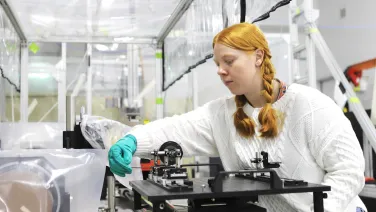
Adaptive optics
The ANU is a founding partner in the Space Environment Research Centre, collaborating with other research organisations and industry partners on accurate tracking of satellites and space debris, orbit analysis and collision mitigation, using high powered laser beams and AO.
Content navigation
About
The only Australian experts in this field, we specialise in Adaptive Optics (AO – see explanation below) for advanced astronomical instruments, reliable tracking of satellites and space debris, and high-performance laser communications. We are building innovative AO systems for the Giant Magellan Telescope and the Gemini South telescope in Chile, as well as the Subaru Telescope in Hawaii.
The ANU is a founding partner in the Space Environment Research Centre, collaborating with other research organisations and industry partners on accurate tracking of satellites and space debris, orbit analysis and collision mitigation, using high powered laser beams and AO.
We can also employ AO to provide robust, high-speed, free space laser communications for Internet, defence and space science applications. Other developing AO applications include retinal imaging and high-energy laser cutting/welding.
Ask a question about our AO capabilities or tell us what you need: What problems can we help you solve?
How AO systems work
AO systems measure distortions in light waves – like the ‘twinkle’ caused when starlight passes through our turbulent atmosphere – and activate deformable mirrors to compensate for the disruption, producing images of vastly superior resolution.
AO can be used with natural and artificial light sources, including lasers. Using laser beams to energise sodium atoms in the atmosphere, we create the artificial guide ‘stars’ used in AO systems.


